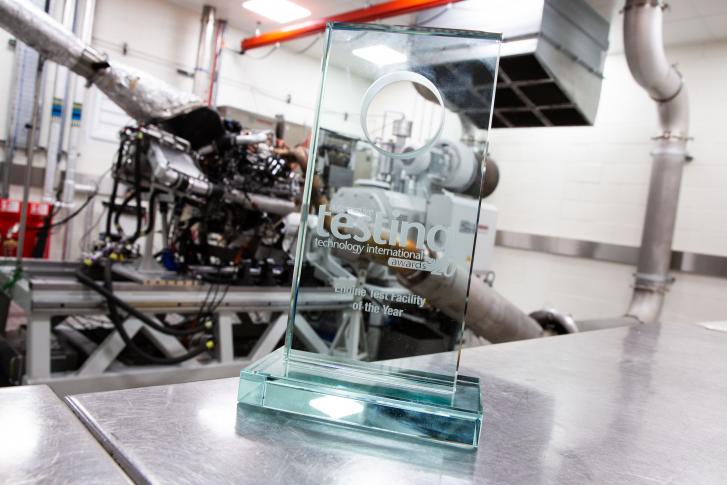
Prodrive’s Powertrain Development Centre has won the Engine Test Facility of the Year Award from Automotive Testing International magazine.
The centre, at Prodrive’s headquarters at Banbury, was opened in 2019 and allows the company to accelerate the development of the new generation of alternative-fuel powertrains and internal combustion engines. The facility was completed with help from OxLEP via the Government’s Local Growth Fund.
Read more on the Powertrain Development Centre opening (November 2019)
Central to the £5 million investment is a 660 kW transient dyno, one of the most powerful of its kind in the UK, which with temperature, humidity and transient pressure-controlled induction air, can replicate most running conditions, while also providing powerful cooling for IC engines and electric vehicle (EV) components including batteries and motors.
The ability to simulate near exact running conditions and replicate in vehicle transient operating cycles means the dyno is particularly suited to powertrain calibration, durability testing and performance development.

The dyno is able to handle engine outputs of up to 880 bhp and is located on an easily-adjustable, modular grid system. This ensures that Prodrive can efficiently tailor it to the layout of any powertrain including the testing of four wheel drive electric/hybrid drivetrains. Adjoining the transient dyno cell is a dedicated engine build shop, with the capability to build up to 200-300 units a year cater for niche OEM projects.
Arthur Shaw, Head of Powertrain Development at Prodrive, said: “The award recognises just what an advanced test facility we have in Banbury. It has been fundamental to our ability to deliver some key powertrain projects over the last 18 months, including a brand new engine for our Dakar T1 car and a Le Mans and World Championship winning engine for Aston Martin.
"The high specification of our new dyno means we are in an even stronger position to develop and calibrate electric powertrains, allowing our customers to enjoy savings in terms of cost and time in comparison to physical testing on the road or track.”




